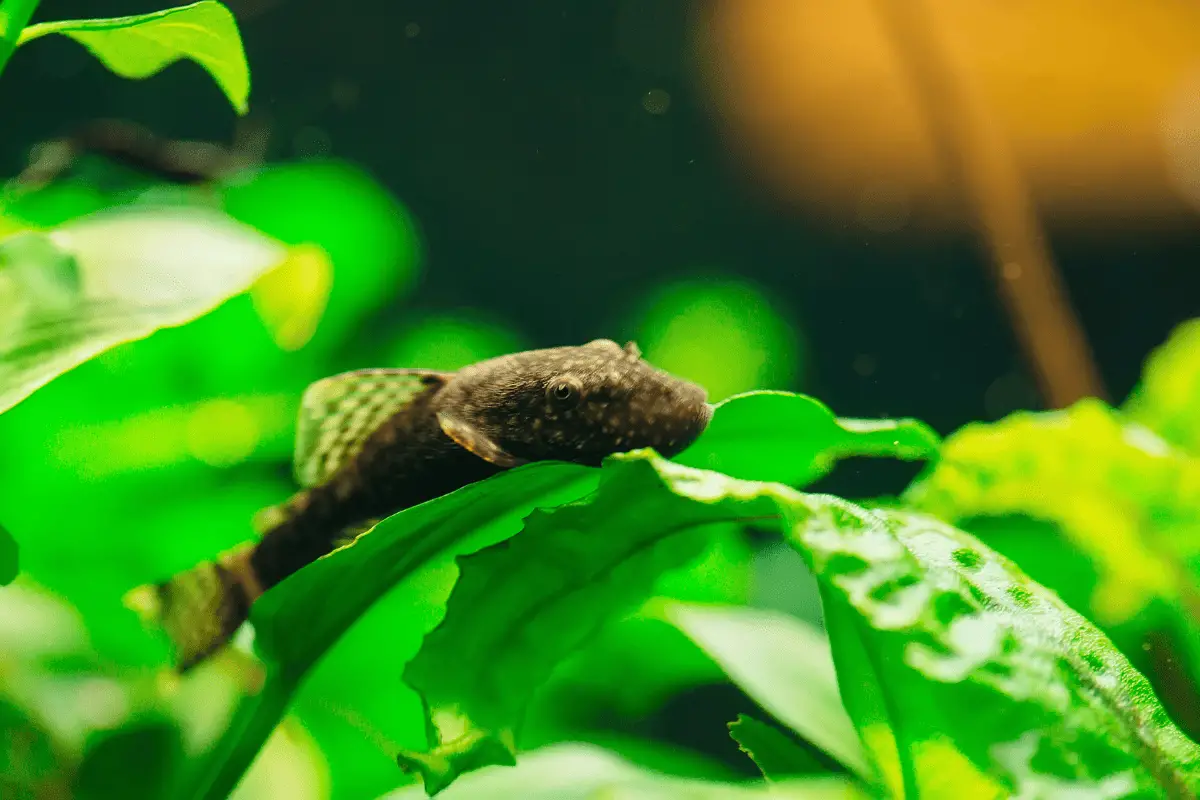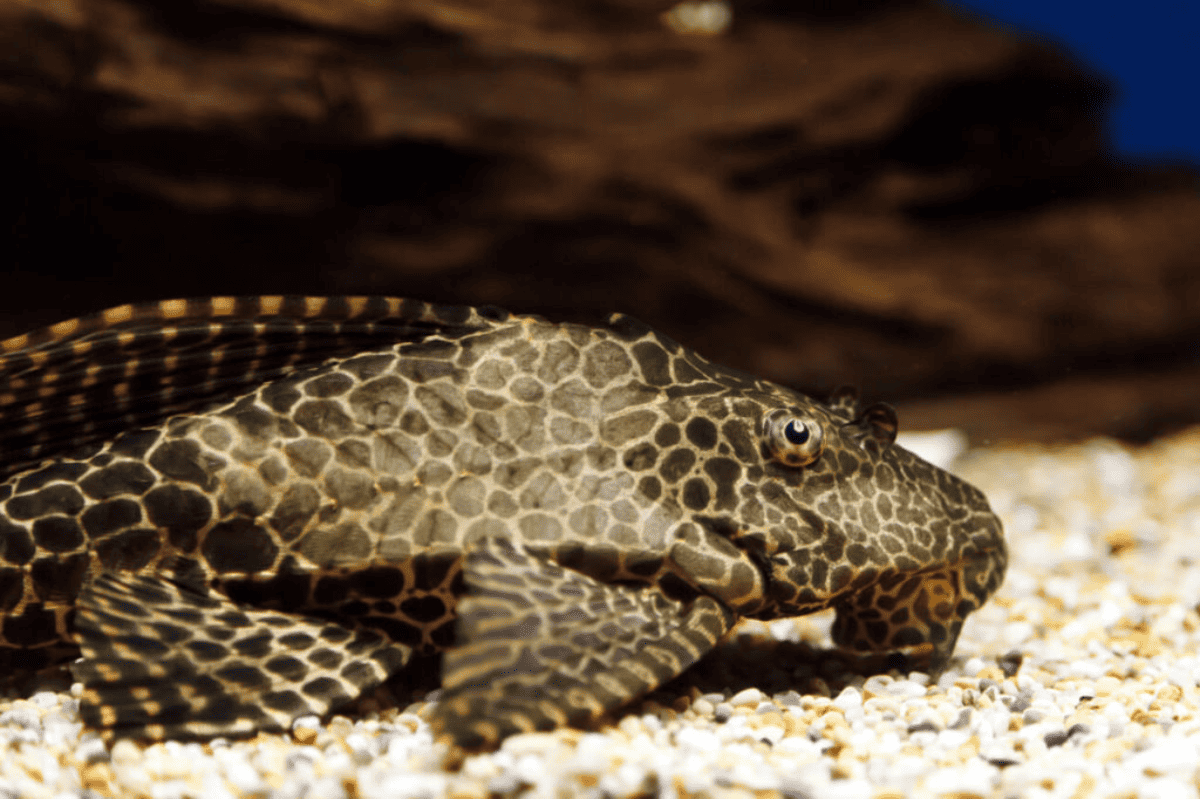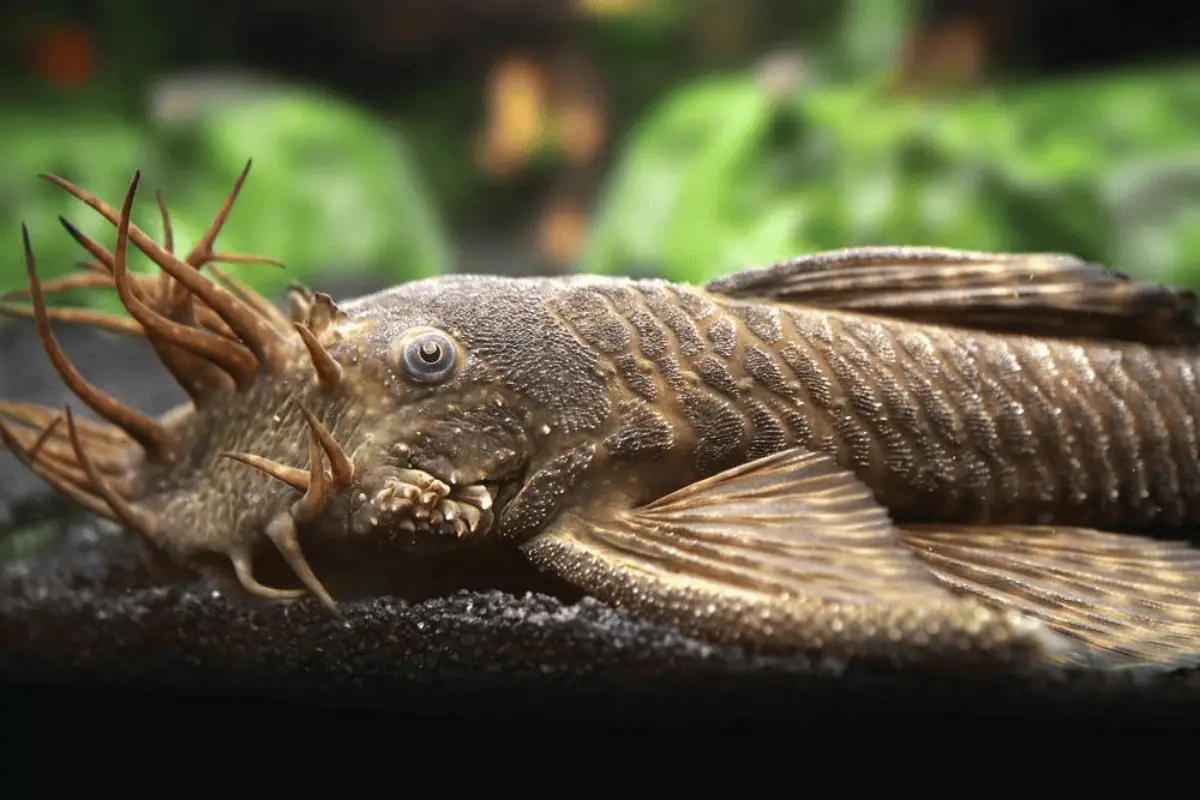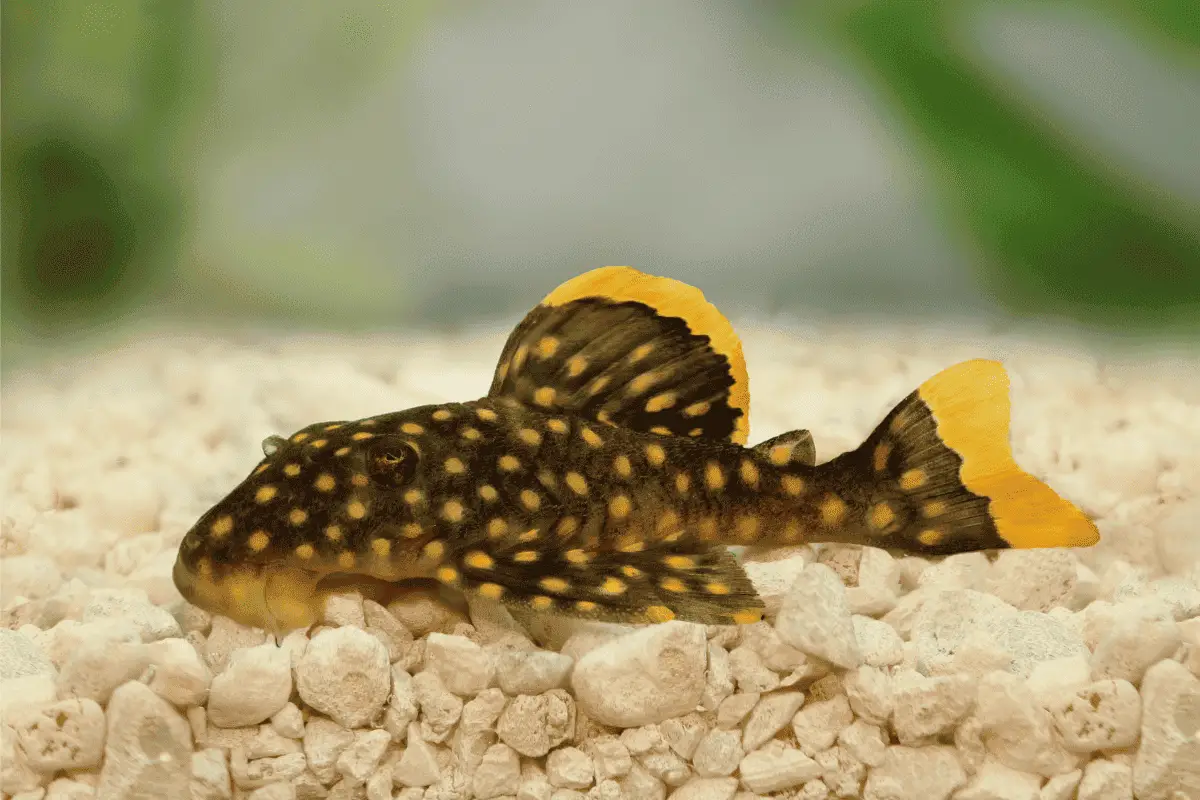Plecos and Zebra Danios are both favorites in freshwater aquariums. But can they coexist in one tank?
What do you need to think about when housing them together? How about their tank conditions, water needs, and food preferences?
Which Pleco varieties work well with Zebra Danios, and which ones should you steer clear of? And other tank companions?
In this article, I’ll cover all these topics and more. Let’s dive in.

Can I Keep Plecos and Zebra Danios Together in the Same Tank?
Yes, you can keep Plecos and Zebra Danios together in the same tank. Both species have compatible temperaments and do not pose direct threats to each other.
- Temperature Compatibility: Plecos and Zebra Danios both thrive in temperatures between 70-78°F, making it easier to maintain consistent water conditions.
- Differing Diet Needs: Plecos are mostly herbivores focusing on algae, while Zebra Danios eat small insects and worms, reducing competition for food.
- Distinct Swimming Zones: Plecos primarily stick to the bottom, while Zebra Danios actively swim in the middle to upper parts of the tank.
- Peaceful Nature of Both: Neither Plecos nor Zebra Danios are known to be aggressive, ensuring they generally tolerate each other’s presence.
- Size Disparity Benefits: Due to their size difference, Plecos won’t see Zebra Danios as prey, and the swift-moving Danios won’t pester the slower-moving Plecos.
Also Read: Pleco Fish Tank Mates
Plecos vs. Zebra Danios: Behavior
The first factor worth considering is the Plecos’ and Zebra Danios’ natural behavior. Here is what you should know:
Pleco Fish: Natural Behavior
Plecos mainly reside at the tank’s bottom, being more active at night and often hiding during daytime hours. They’re usually calm and tend to keep their distance.
- Bottom Dwellers: Plecos like sticking to the tank’s bottom areas, using their unique suction mouths.
- Nocturnal Activities: At night, Plecos become busier, searching for food and roaming around their environment.
- Love for Hiding: During the day, they frequently find comfort in caves or beneath ornaments, feeling protected and cozy.
- Non-Aggressive Nature: Plecos are generally not territorial and rarely pick fights with fellow fish.

Zebra Danio: Natural Behavior
Zebra Danios are always on the go, often swimming in the tank’s middle and top sections. They thrive in groups as they’re schooling fish.
- Active Swimmers: Unlike Plecos, Zebra Danios are constantly swimming, particularly in the higher water levels.
- Schooling Behavior: They enjoy being with their species and move in close groups, a behavior that helps them in the wild.
- Fast and Agile: Their sleek frames let them zip and switch directions quickly, noticeable during their playful pursuits.
- Peaceful Companions: Zebra Danios are usually laid-back, making them great for mixed fish tanks.

Ideal Parameters for Plecos and Zebra Danios
Both Plecos and Zebra Danios thrive in specific water conditions.
This table outlines the ideal parameters for each species and the recommended conditions for a tank containing both.
| Parameter | Plecos | Zebra Danios | Both Types |
| Temperature | 74-80°F | 65-77°F | 74-77°F |
| pH Level | 6.5-7.5 | 6.0-7.5 | 6.5-7.5 |
| Water Hardness | Moderate (6-10 dGH) | Soft to Moderate (5-12 dGH) | Moderate (6-10 dGH) |
Pleco Fish: Ideal Parameters
Plecos require specific water parameters to thrive, with temperatures slightly on the warmer side and a neutral to slightly acidic pH. They can tolerate a range of water hardness.
- Temperature Needs: Plecos thrive in water temperatures between 74-80°F, ensuring optimal metabolic functions.
- pH Levels: Plecos prefer a pH level between 6.5 and 7.5, which mirrors their natural Amazon river habitat.
- Water Hardness: They can adapt to varying degrees of hardness, but generally, a range between 4-15 dH is ideal.

Zebra Danio: Ideal Parameters
Zebra Danios, on the other hand, prefer slightly cooler temperatures and can adapt to a broader range of pH and hardness levels compared to Plecos.
- Temperature Range: Zebra Danios do well in temperatures between 65-77°F, with the middle range being most optimal.
- pH Adaptability: They can tolerate pH levels from 6.0 to 8.0, offering flexibility for aquarists.
- Varied Hardness: Zebra Danios are adaptable to water hardness levels ranging from 2-20 dH, showcasing their hardy nature.

Plecos vs. Zebra Danios: Tank Setup
When setting up a tank for Plecos, Zebra Danios, or both, certain factors come into play.
This table contrasts the tank setup preferences for both species and suggests ideal conditions for a communal tank.
| Setup Item | Plecos | Zebra Danios | Both Types |
| Ammonia/Nitrite/Nitrate | Low (near 0ppm for first two) | Low (near 0ppm for first two) | Low (near 0ppm for first two) |
| Tank Size | Minimum 55 gallons | 10-20 gallons | Minimum 55 gallons |
| Foliage | Loves plants for cover | Enjoys open swimming | Mix of plants & open space |
| Decorations | Caves, driftwood | Minimal, free-swimming | Caves, driftwood, open areas |
| Filter | Strong, for waste control | Moderate | Strong with moderate flow |
| Heater | Required | Optional, based on room temp | Required |
| Substrate | Sand or fine gravel | Small gravel | Sand or fine gravel |
| Pump | Necessary for oxygenation | Not crucial | Necessary for good flow |
| Lighting | Moderate, not too bright | Moderate to bright | Moderate |
Pleco Fish: Tank Setup
For Plecos, having an adequately sized tank is paramount due to their potential size.
The environment should be tailored to mimic their natural habitat, with special attention to hiding spots and stable water parameters.
- Ammonia Nitrite Nitrate: Stable levels are essential; aim for 0ppm for ammonia and nitrite, and below 40ppm for nitrate.
- Tank Size: Given their growth potential, Plecos require larger tanks, typically starting at 55 gallons or more.
- Foliage: Live plants or soft artificial ones can be added, as Plecos might occasionally graze on them.
- Decorations: Providing hiding spots like caves or large driftwood is crucial to make Plecos feel secure.
- Filter: A robust filtration system is essential, as Plecos produce significant waste.
- Heater: Ensure consistent temperatures between 74-80°F using a reliable heater.
- Substrate: Sand or fine gravel is ideal, mirroring the soft bottoms of their natural habitats.
- Pump: A moderate flow is preferred, replicating river conditions without being too strong.
- Lighting: Moderate to low lighting complements Plecos’ nocturnal nature.

Zebra Danio: Tank Setup
Zebra Danios are active swimmers that appreciate a tank with ample swimming space. While they are relatively undemanding, a well-decorated tank can enhance their wellbeing.
- Ammonia Nitrite Nitrate: Aim for 0ppm for ammonia and nitrite, and nitrates should be kept under 20ppm.
- Tank Size: A minimum of 10 gallons is recommended, but larger tanks enhance their active swimming behavior.
- Foliage: Live or artificial plants offer a sense of protection and territories.
- Decorations: Floating decorations or wood can be added, though not as crucial as with Plecos.
- Filter: A standard filter is sufficient; however, clean water is essential for their health.
- Heater: Consistent temperatures between 65-77°F should be maintained.
- Substrate: Fine gravel or sand is preferable, offering a natural look.
- Pump: Gentle to moderate water flow suits the preferences of these swift swimmers.
- Lighting: Standard lighting is acceptable, though they can appreciate a few shady areas.

The Dietary Requirements of Plecos and Zebra Danios
Diet plays a significant role in the health and well-being of fish.
Here’s a breakdown of the dietary preferences for Plecos, Zebra Danios, and recommendations for a tank with both species.
| Dietary Aspect | Plecos | Zebra Danios | Both Types |
| Food Types | Algae wafers, vegetables, occasional protein | Flakes, micro-pellets, live or frozen foods | Mix of wafers, vegetables, flakes, micro-pellets |
| Quantity | Moderate, based on size & age | Small, regular portions | Varied based on species & individual size |
| Feeding Schedule | Once or twice a day, preferably at night | Multiple small feeds daily | Multiple feedings, accounting for both types |
Pleco Fish: Ideal Dietary Requirements
Plecos are primarily herbivores but appreciate variety in their diet. This not only satisfies their nutritional needs but also prevents potential health issues.
- Food Types: Offer algae wafers, fresh vegetables (like zucchini), and occasionally, high-quality pellets.
- Quantity: Plecos can eat quite a bit, but avoid overfeeding. Remove uneaten vegetables within 24 hours.
- Feeding Schedule: Evening feedings align with their nocturnal tendencies, though they will adjust to daytime feeding.

Zebra Danio: Ideal Dietary Requirements
Zebra Danios are omnivores and require a balanced diet. A mix of high-quality flakes and occasional live or frozen foods is ideal.
- Food Types: A diet of quality flake food, supplemented with live or frozen daphnia, brine shrimp, or bloodworms, is great.
- Quantity: Feed only what they can consume within a few minutes to maintain water quality.
- Feeding Schedule: Feeding them 1-2 times daily is ideal, ensuring all fish get their share.

Pleco Species Most Suitable for a Tank With Zebra Danios
Some Pleco species are more compatible with Zebra Danios due to their size, temperament, and care requirements.
It’s best to select Plecos that remain relatively small and are peaceful by nature.
- Bristlenose Plecos (Ancistrus sp.): These remain small (up to 6 inches) and are one of the most commonly kept Plecos, known for their calm demeanor.
- Clown Plecos (Panaqolus maccus): A small, wood-eating Pleco species that grows to about 3-4 inches, making them an ideal tankmate.
- Rubber Lip Plecos (Chaetostoma sp.): They stay within a manageable size of 4-5 inches and aren’t aggressive, fitting well with Zebra Danios.
- Candy Stripe Plecos (Peckoltia vittata): Growing up to 4 inches, their colorful patterns and docile nature make them suitable companions.
- Dwarf Plecos (L129): Reaching only about 2-3 inches in length, their small stature ensures they won’t pose a threat or compete for space.
Also Read: Can Guppies Live With Plecos?

Which Pleco Types Shouldn’t Be Kept with Zebra Danios?
Some Pleco species can grow significantly large, have aggressive tendencies, or have specialized care needs that might not be suitable for a tank with Zebra Danios.
- Common Plecos (Hypostomus plecostomus): These can grow up to 24 inches, potentially causing space issues and stressing smaller tankmates.
- Sailfin Plecos (Pterygoplichthys gibbiceps): Growing up to 18 inches, their size can overwhelm a tank meant for Zebra Danios.
- Royal Plecos (Panaque nigrolineatus): Known to reach 17 inches, their large size and need for wood in their diet might disrupt a balanced community tank.
- Vampire Plecos (Leporacanthicus galaxias): Their semi-aggressive nature and potential to grow up to 10 inches can lead to clashes with other tank inhabitants.
- Gulper Plecos (Acanthicus hystrix): These giants can reach up to 20 inches and may inadvertently harm or stress smaller Zebra Danios due to their size and movement.
How to Introduce Your Pleco to a Tank with Zebra Danios
To ensure a harmonious environment, proper introduction of a Pleco into a tank with Zebra Danios is crucial. Following a methodical approach can reduce stress and potential conflicts.
- Quarantine First: Before anything, keep the Pleco in a separate tank for 2-4 weeks, ensuring no diseases are present.
- Float the Bag: Place the Pleco’s bag in the main tank, letting it float for about 20 minutes to match the water temperatures.
- Gradual Mixing: Over the next 45 minutes, add 50ml of the tank water to the bag every 5 minutes, helping the Pleco adjust.
- Use a Net: Instead of pouring, use a net to move the Pleco, preventing bag water from mixing with tank water.
- Monitor Behavior: For the initial 24 hours, check every few hours for signs of distress or aggression among fish.

Tips for Keeping Plecos with Zebra Danios
Creating a tank environment that caters to both Plecos and Zebra Danios requires insight into their unique needs and behaviors.
- Provide Enough Space: A minimum of a 55-gallon tank ensures sufficient room for both species, considering the Pleco’s growth potential.
- Offer Hiding Spots: Install caves or use large driftwood pieces; Plecos often seek such refuges, especially during daylight hours.
- Maintain Water Quality: Regularly test for ammonia, nitrite, and nitrate, keeping them at safe levels (0ppm for the first two, <20ppm for nitrate).
- Feed Separately: Consider feeding Plecos at night, using algae wafers or veggies, and Zebra Danios in the day with flakes or small pellets.
- Avoid Overcrowding: A general guideline is 1 inch of fish per gallon; too many fish can stress both Plecos and Danios.
- Monitor for Aggression: While rare, if a Pleco displays territorial behavior, consider adding barriers or rearranging the tank.
- Consistent Parameters: Maintain temperature between 74-80°F for Plecos and 65-77°F for Danios, with a pH of 6.5-7.5.
Best Tank Mates for Plecos and Zebra Danios
It’s crucial to pair these fish with others that match their disposition and habitat needs.
Both Plecos and Zebra Danios are typically gentle, making them apt for community tanks when paired with fitting tankmates.
- Tetras: These vibrant, petite fish, like Neon or Cardinal Tetras, are easy-going and thrive in water conditions akin to Zebra Danios.
- Corydoras Catfish: Residing at the bottom like Plecos, they live harmoniously, assisting in maintaining a clean tank base.
- Gouramis: Species such as Dwarf or Honey Gouramis, known for their serene nature, add a pop of color without causing any upheaval.
- Harlequin Rasboras: Their gentle character and eye-catching hues nicely balance Zebra Danios’ energy and Plecos’ calm demeanor.
- Cherry or Amano Shrimp: Perfect for controlling algae, these critters mostly stick to themselves, minimizing conflicts with Plecos or Danios.
- Mollies and Platies: Being friendly livebearers, they bring a diverse motion to the tank’s middle and upper sections.
Also Read: Can Plecos And Platies Live Together?

Conclusions
For the quick readers, here’s a brief summary:
- Plecos and Zebra Danios can live together in harmony due to their matching temperaments and preferred water temperatures.
- They have unique diets, cutting down food rivalry; Plecos eat algae while Zebra Danios munch on tiny insects and worms.
- A thorough grasp of each species’ behaviors aids in setting up a tranquil tank environment.
- Opting for specific Pleco types, like Bristlenose or Clown Plecos, can promote serene living alongside Zebra Danios.
- When integrating Plecos with Zebra Danios, a methodical strategy minimizes tension and possible clashes, and constant observation along with the right care ensures their health and happiness.

